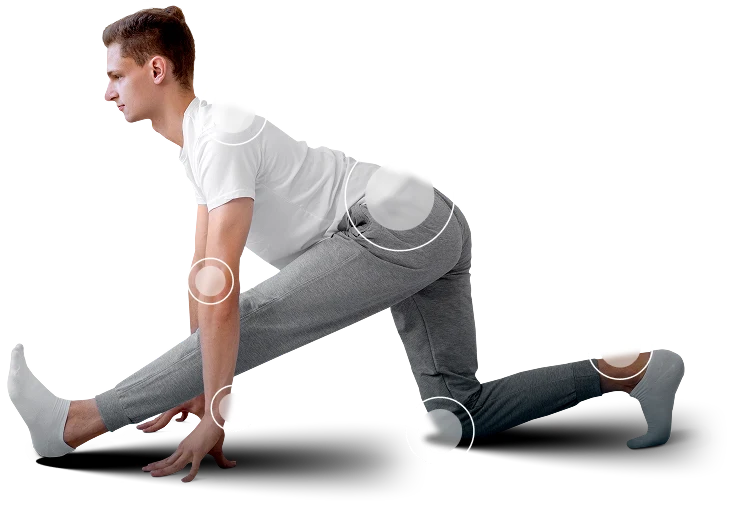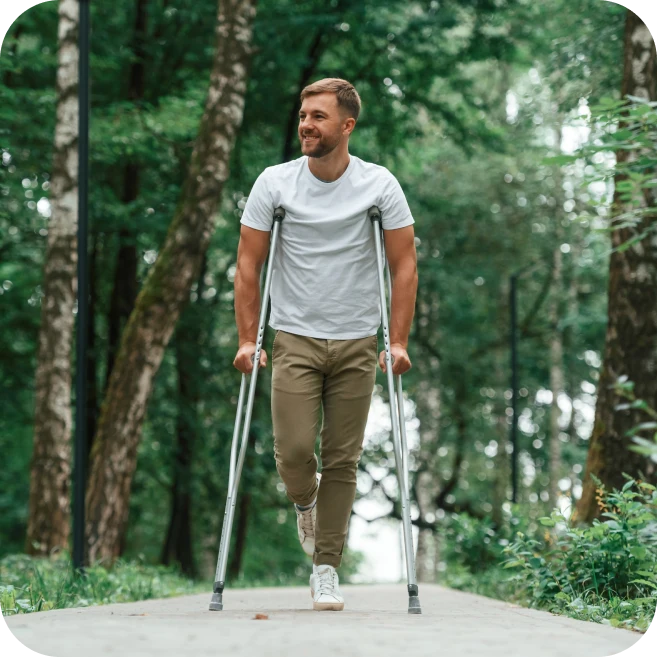Learn about the hip injuries and conditions we treat,
from labral tears to impingement, with advanced, joint-preserving orthopedic care.

Your hips are powerful ball-and-socket joints that support nearly every movement you make — walking, running, sitting, and standing. When pain, stiffness, or catching starts to interfere with those movements, it can affect every part of your life. At The Joint Preservation Center, our surgeons focus on preserving your natural hip joint whenever possible. Using advanced arthroscopic and biologic techniques, we aim to relieve pain, restore motion, and protect your long-term joint health — often helping patients avoid total hip replacement.
Below are the most common hip conditions we diagnose and treat, explained in simple, patient-friendly language.
FAI occurs when there’s abnormal contact between the ball (femoral head) and socket (acetabulum) of your hip, leading to pain, cartilage wear, and labral tears.
We treat:
Our team specializes in arthroscopic hip impingement surgery (FAI correction) to smooth bone edges, repair damaged tissue, and restore smooth, natural movement.


The labrum is a ring of cartilage that lines the hip socket and provides cushioning and stability. Tears often cause sharp pain, clicking, or catching deep in the groin.
We treat:
Our surgeons perform arthroscopic labral repair and reconstruction, restoring suction-seal stability to the joint and relieving pain without replacing the hip.
Cartilage in the hip allows smooth, pain-free motion. Damage to this cartilage can lead to stiffness and early arthritis.
We treat:
We use microfracture, cartilage restoration, and biologic resurfacing to help regenerate healthy tissue and delay or prevent the need for replacement surgery.


In dysplasia, the hip socket is too shallow to fully support the femoral head, which can lead to labral tears and arthritis over time.
We treat:
Our specialists use arthroscopic and realignment procedures to improve stability, relieve pain, and protect the cartilage from early wear.
When the structures that hold your hip in place are stretched or damaged, the joint can feel unstable or “slip.” Sometimes, fragments of bone or cartilage can also float in the joint.
We treat:
Treatment may include arthroscopic removal of loose bodies, capsule tightening, or biologic tissue repair to restore stability.


The hip is surrounded by strong muscles and tendons that stabilize and power your movement. Overuse or injury can cause inflammation, tears, or chronic pain.
We treat:
We offer biologic injections, focused rehabilitation, and minimally invasive tendon repair to restore strength and comfort.
Repetitive stress or trauma can weaken the bone around the hip joint.
We treat:
We focus on early diagnosis, biologic bone stimulation, and guided recovery plans to prevent progression.


When hip degeneration begins, early intervention can make all the difference.
We treat:
Our goal is to slow or reverse joint damage using biologic therapies, realignment procedures, and targeted rehabilitation.
Athletes and active adults are especially prone to hip injuries caused by overuse or repetitive motion.
We treat:
Our goal is to return you safely to activity through individualized rehabilitation and joint-preserving procedures.

We don’t just treat hip pain — we focus on understanding why it happens and how to preserve your joint for the long term. Our fellowship-trained orthopedic surgeons specialize in hip arthroscopy, cartilage restoration, and biologic therapy, combining advanced science with compassionate care.
Whether your goal is to walk pain-free, run again, or avoid hip replacement, we’ll create a personalized plan that helps you move freely and live without limits.
If you’re experiencing hip pain, clicking, catching, or stiffness — or if you’ve been told you might need a hip replacement — you may have options to preserve your joint and recover naturally. Request an appointment with one of our hip preservation specialists today to explore your personalized treatment plan.